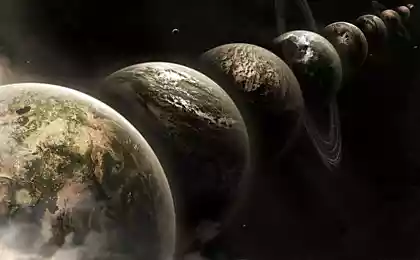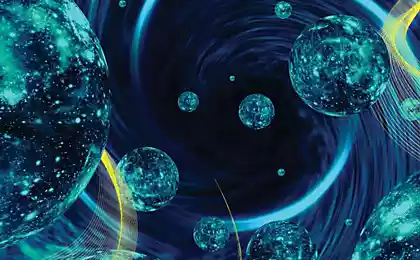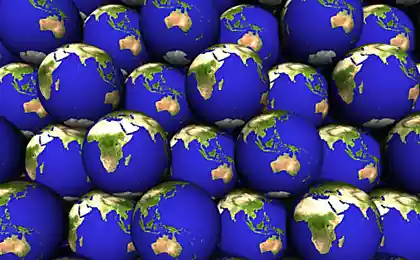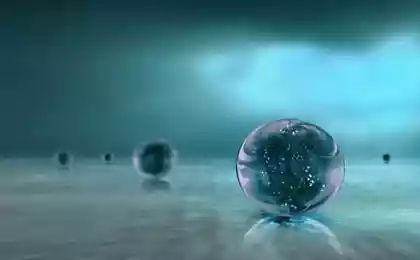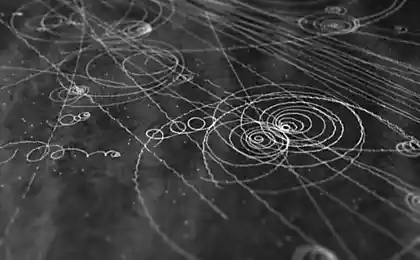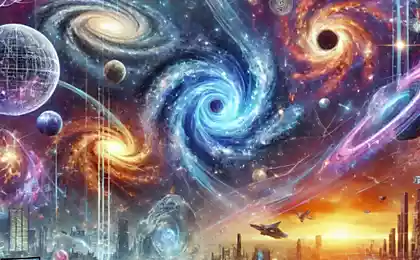215
Why is it so important to know if there are parallel universes?
The existence of parallel universes may seem like some kind of fantastic question that only science fiction writers can ask and that has nothing to do with modern theoretical physics. But the idea that we live in a multiple universe made up of parallel universes has long been considered scientifically sound — albeit highly controversial. Yet the search for ways to test this theory, including looking at the sky for collision sites with other universes, is well underway.

It is important to keep in mind that the theory of multiple universes is not exactly a theory, but rather a consequence of our current understanding of theoretical physics. That's a big difference. We can't give up and say, "OK, let's have a multiverse." That our universe may be one of many others stems from current theories like quantum mechanics and string theory.
Multi-world interpretation
You may have heard of Schrödinger’s cat thought experiment, a creepy animal that lives in a closed box. The act of opening the box allows us to learn one of the possible stories of our cat’s future, including one in which he is both alive and dead. The reason this seems impossible is that our human intuition is simply not familiar with such an outcome.
But according to the strange rules of quantum mechanics, such a future is possible. The reason this could happen is because of the vast space of possibilities in quantum mechanics. Mathematically, the quantum mechanical state is the sum (superposition) of all possible states. In the case of Schrödinger’s cat, the cat is in a superposition of “alive” and “dead” states.
But how do we bring all this into line with our common sense? We can assume that of all these states, only one thing is “objectively true”: the one we observe. But we can assume that all possibilities are true and that they exist in different universes of the multiple universe.
String theory is one of our most (if not the most) promising avenues that could combine quantum mechanics and gravity. This is extremely difficult because the gravitational force is difficult to describe at short distances, where atoms and subatomic particles function – in the realm of quantum mechanics.
But string theory, which claims that all fundamental particles are made up of one-dimensional strings, can describe all the known forces of nature simultaneously: gravity, electromagnetism and nuclear interactions.
However, for string theory to work mathematically, it requires at least ten physical measurements. Since we can only observe four dimensions: height, width, depth (spatial) and time (temporary), the extra dimensions of string theory must be somehow hidden.
To use this theory to explain the physical phenomena we know, these extra dimensions have to be “compactified,” curled up so they can’t be seen. There may be six additional indistinguishable dimensions at each point in our four major dimensions.
The problem, or as some would say, the peculiarity of string theory, is that there are many ways to do this compactification — 10^500 possibilities. Each of these compactifications leads to a universe with different physical laws, with different electron masses and gravitational constants. However, there are also strong objections to the compactification methodology, so the issue cannot be considered resolved.
From all this arises the question: in which of the possible string landscapes do we live? String theory itself does not provide a mechanism for such a prediction, making it useless because it is untestable. Fortunately, the idea of our study of the cosmology of the early universe turned this bug into a feature.
At the time of the earliest universe, even before the Big Bang, the universe underwent a period of accelerated expansion - inflation. Inflation was originally intended to explain why the temperature of the present observable universe is almost uniform.
However, this theory also predicted a spectrum of temperature fluctuations around this equilibrium, which was later confirmed by the Cosmic Backgroung Explorer, Wilkinson Microwave Anisotropy Probe and PLANCK spacecraft.

Although the exact details of this theory are still hotly debated, inflation is well accepted by physicists. However, the implication of this theory is that there must be other parts of the universe that are still accelerating.
However, due to quantum fluctuations in space-time, some parts of the universe will never reach the final state of inflation. This means that the universe, at least according to our current understanding, will be in a state of eternal inflation. Some parts of it may eventually become other universes, and those in turn may become other universes. Such a mechanism produces an infinite number of universes.
If you combine this scenario with string theory, it is possible that each of these universes has a different compactification of extra dimensions, and therefore different physical laws.
Such universes, predicted by string theory and inflation, that live in the same physical space (unlike many quantum mechanical universes that live in mathematical space), can overlap or collide. They will inevitably collide, leaving possible signatures in the cosmic sky that we can try to look for.
The exact details of these signatures depend on specific models, from cold to hot spots in the cosmic microwave background to anomalous voids in the distribution of galaxies. However, because collisions with other universes must occur in a certain direction, any signatures are expected to break the uniformity of our observable universe.
These signatures are actively sought by scientists. Some peer into the imprints of the cosmic microwave background, the afterglow of the Big Bang. However, such signatures have not yet been found. Others look for indirect confirmation in the form of gravitational waves, ripples in the fabric of space-time that appear when massive objects pass through it. Such waves can directly confirm the existence of inflation, further strengthening the theory of multiple universes.
Whether we can prove their existence or not is still unknown. But given the grand implications of such evidence, the search is certainly worth continuing. published
P.S. And remember, just changing our consumption – together we change the world!
Join us on Facebook and VKontakte, and we are in Odnoklasniki
Source: hi-news.ru

It is important to keep in mind that the theory of multiple universes is not exactly a theory, but rather a consequence of our current understanding of theoretical physics. That's a big difference. We can't give up and say, "OK, let's have a multiverse." That our universe may be one of many others stems from current theories like quantum mechanics and string theory.
Multi-world interpretation

You may have heard of Schrödinger’s cat thought experiment, a creepy animal that lives in a closed box. The act of opening the box allows us to learn one of the possible stories of our cat’s future, including one in which he is both alive and dead. The reason this seems impossible is that our human intuition is simply not familiar with such an outcome.
But according to the strange rules of quantum mechanics, such a future is possible. The reason this could happen is because of the vast space of possibilities in quantum mechanics. Mathematically, the quantum mechanical state is the sum (superposition) of all possible states. In the case of Schrödinger’s cat, the cat is in a superposition of “alive” and “dead” states.
But how do we bring all this into line with our common sense? We can assume that of all these states, only one thing is “objectively true”: the one we observe. But we can assume that all possibilities are true and that they exist in different universes of the multiple universe.
String theory is one of our most (if not the most) promising avenues that could combine quantum mechanics and gravity. This is extremely difficult because the gravitational force is difficult to describe at short distances, where atoms and subatomic particles function – in the realm of quantum mechanics.
But string theory, which claims that all fundamental particles are made up of one-dimensional strings, can describe all the known forces of nature simultaneously: gravity, electromagnetism and nuclear interactions.
However, for string theory to work mathematically, it requires at least ten physical measurements. Since we can only observe four dimensions: height, width, depth (spatial) and time (temporary), the extra dimensions of string theory must be somehow hidden.
To use this theory to explain the physical phenomena we know, these extra dimensions have to be “compactified,” curled up so they can’t be seen. There may be six additional indistinguishable dimensions at each point in our four major dimensions.
The problem, or as some would say, the peculiarity of string theory, is that there are many ways to do this compactification — 10^500 possibilities. Each of these compactifications leads to a universe with different physical laws, with different electron masses and gravitational constants. However, there are also strong objections to the compactification methodology, so the issue cannot be considered resolved.
From all this arises the question: in which of the possible string landscapes do we live? String theory itself does not provide a mechanism for such a prediction, making it useless because it is untestable. Fortunately, the idea of our study of the cosmology of the early universe turned this bug into a feature.
At the time of the earliest universe, even before the Big Bang, the universe underwent a period of accelerated expansion - inflation. Inflation was originally intended to explain why the temperature of the present observable universe is almost uniform.
However, this theory also predicted a spectrum of temperature fluctuations around this equilibrium, which was later confirmed by the Cosmic Backgroung Explorer, Wilkinson Microwave Anisotropy Probe and PLANCK spacecraft.

Although the exact details of this theory are still hotly debated, inflation is well accepted by physicists. However, the implication of this theory is that there must be other parts of the universe that are still accelerating.
However, due to quantum fluctuations in space-time, some parts of the universe will never reach the final state of inflation. This means that the universe, at least according to our current understanding, will be in a state of eternal inflation. Some parts of it may eventually become other universes, and those in turn may become other universes. Such a mechanism produces an infinite number of universes.
If you combine this scenario with string theory, it is possible that each of these universes has a different compactification of extra dimensions, and therefore different physical laws.
Such universes, predicted by string theory and inflation, that live in the same physical space (unlike many quantum mechanical universes that live in mathematical space), can overlap or collide. They will inevitably collide, leaving possible signatures in the cosmic sky that we can try to look for.
The exact details of these signatures depend on specific models, from cold to hot spots in the cosmic microwave background to anomalous voids in the distribution of galaxies. However, because collisions with other universes must occur in a certain direction, any signatures are expected to break the uniformity of our observable universe.
These signatures are actively sought by scientists. Some peer into the imprints of the cosmic microwave background, the afterglow of the Big Bang. However, such signatures have not yet been found. Others look for indirect confirmation in the form of gravitational waves, ripples in the fabric of space-time that appear when massive objects pass through it. Such waves can directly confirm the existence of inflation, further strengthening the theory of multiple universes.
Whether we can prove their existence or not is still unknown. But given the grand implications of such evidence, the search is certainly worth continuing. published
P.S. And remember, just changing our consumption – together we change the world!
Join us on Facebook and VKontakte, and we are in Odnoklasniki
Source: hi-news.ru



